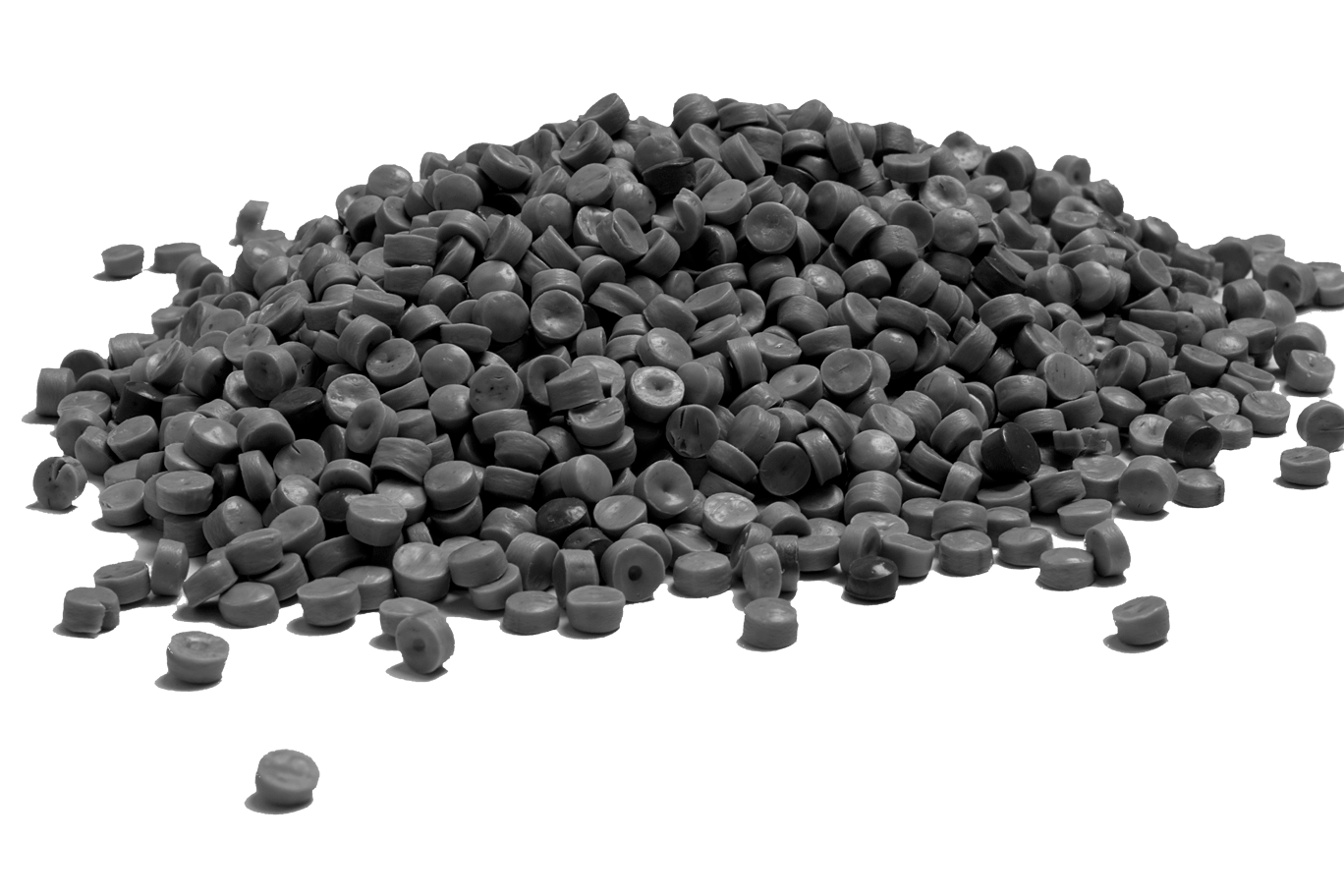Our recycled material
We transform plastic waste into high-quality raw materials.
Our recycled plastic pellets
Granuplast specializes in the processing of two types of plastic waste, primarily post-consumer in origin, into high-quality granules: High-Density Polyethylene (HDPE) and Polypropylene (PP).
1. High-Density Polyethylene (HDPE)
HDPE is one of the most commonly used types of plastic, found in a multitude of products ranging from milk bottles to trash bins. Its excellent resistance to solvents, low gas permeability, and temperature resistance make it an ideal material for many applications. Our recycled HDPE pellets offer all these qualities while being more cost-effective and environmentally friendly than virgin HDPE.
2. Polypropylene (PP)
PP is another widely used type of plastic found in products such as food packaging, automotive parts, and toys. It is valued for its heat resistance, chemical resistance, and flexibility. Our recycled PP pellets maintain these properties while offering a more competitive price and a reduced carbon footprint compared to virgin PP.

r-HDPE
(Recycled High-Density Polyethylene)
| Color | Grey or black |
| Density | 0,950 to 0,970 g/cm3 |
| Melt Flow Rate | 1,8 to 2,6 g/10mn 190°C/60s/5,00kg |
| Moisture content | <0,09 % |
r-PP
(Recycled Polypropylene)
| Color | Grey or black |
| Density | 0,910 to 0,930 g/cm3 |
| Melt Flow Rate | 8 to 15 g/10mn 230°C/10s/2,16kg |
| Moisture content | <0,07 % |
Our production method
Granuplast offers an environmentally friendly production method.
Our recycled plastic pellets
Granuplast is committed not only to minimizing the impact of our products but also to optimizing our own production processes. We continuously work on reducing our water and electricity consumption, thus minimizing our environmental footprint. We have also implemented effective measures to reduce waste production and optimize waste management.
We firmly believe in the need for a transition to more sustainable production methods. While recycling is not a magical solution to plastic pollution, it is an important step toward more responsible management of plastic resources.
1. Optimized resource utilization
Our recycled plastic pellets help reduce dependence on fossil resources, as plastic is made from petroleum. By using plastic waste as raw material, we avoid the extraction of new resources and optimize the use of existing resources.
2. Waste reduction
By recycling HDPE and PP plastics, we help divert these wastes from landfills and the natural environment. This contributes to minimizing the accumulation of plastic waste that can take centuries to decompose. It also prevents the incineration of our waste.
3. Energy saving and reduced carbon footprint
Producing pellets from recycled plastics requires less energy than producing virgin plastics. This means that every pellet of recycled plastic we produce helps save energy and reduce greenhouse gas emissions.
4. Encouraging a circular economy



 Product sheet
Product sheet

 Product sheet
Product sheet